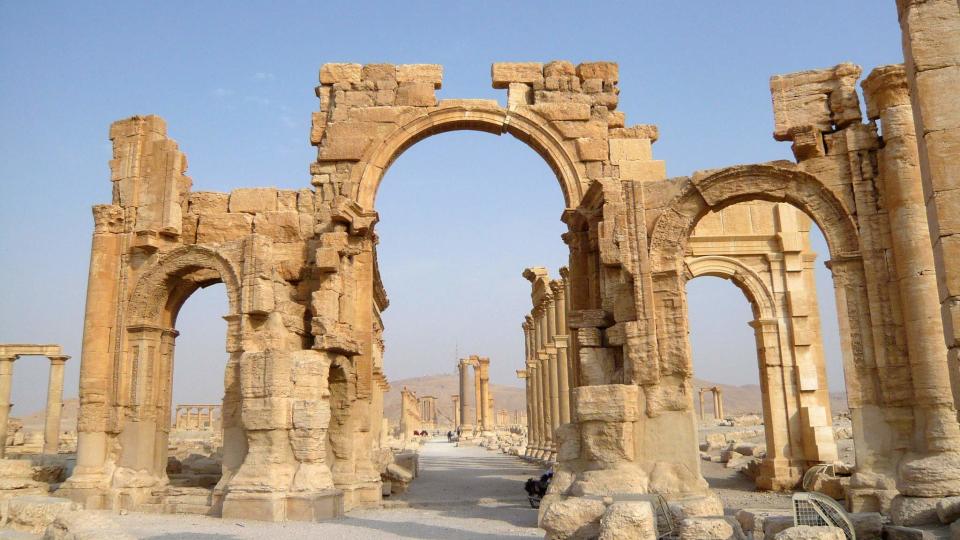'Palmyra Will Be Totally Gone In Months'
Syria's antiquities chief has told Sky News the ancient city of Palmyra "will be totally gone in three to four months".
Maamoun Abdulkarim's warning came as Islamic State militants destroyed the nearly 2,000-year-old Arch of Triumph in Palmyra, according to activists.
It follows the destruction of a number of other temples and statues at the Roman-era UNESCO world heritage site, carried out since IS captured it in May.
The UK-based Syrian Observatory for Human Rights said militants blew up the arch but left the colonnades in place.
The group considers the buildings sacrilegious.
:: Syria's War Puts Heritage And Culture At Risk
Mr Abdulkarim told the Reuters news agency: "It's as though there is a curse that has befallen this city and I expect only news that will shock us. If the city remains in their hands the city is doomed.
"It is now wanton destruction... their acts of vengeance are no longer ideologically driven because they are now blowing up buildings with no religious meaning."
In August, the Sunni Muslim militants blew up the temple of Baal Shamin, then the Temple of Bel, one of the best preserved sites.
Earlier this month, it was also confirmed the militants had destroyed some of Palmyra's funeral towers, sandstone constructions built to hold the remains of the city's richest families.
Sky's Dominic Waghorn said: "Palmyra is what the Pyramids are to the Egyptians and what Stonehenge is to us. It’s devastating what’s happening to the treasure that the Syrians have.
"IS claim to have ideological reasons, which is part of it. But they are also taking a lot of these artefacts and selling them on the black market so they are quite happy to make money by preserving these artefacts."
Palmyra, which linked the Roman Empire to Persia and the East, is said to have been one of the most important cultural centres of the ancient world.
UNESCO has called the destruction of the monuments war crimes and says IS seeks to wipe out evidence of Syria's diverse heritage.
Before the capture of the city, Syrian officials said they had moved hundreds of ancient statues to safe locations.

 Yahoo News
Yahoo News 

